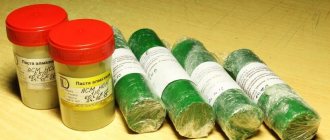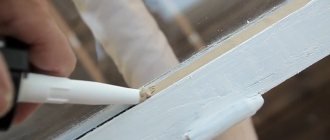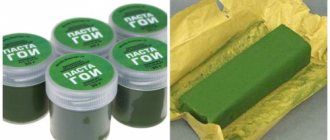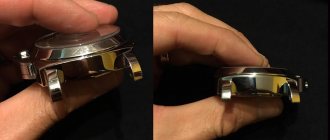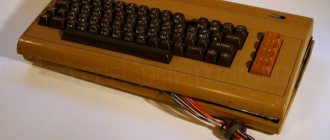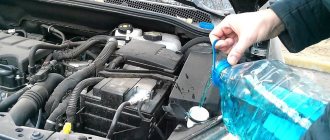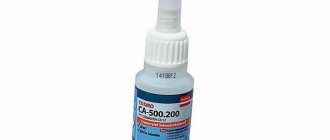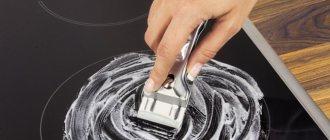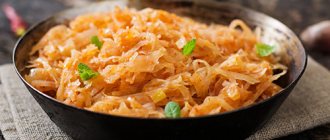What is GOI paste
Essentially, it is a green solid mass, which is a chemical product and was specially developed at the State Optical Institute. This is how the name stands for (abbreviation). This abrasive material is intended for high-quality processing and polishing of metal, plastic, glass and other hard surfaces, depending on their characteristics. This universal paste can be produced in the form of a smooth bar or packaged in liquid form in special jars. The purpose and definition of such chemical products does not change depending on the packaging features.
Compound
The main active ingredient is chromium oxide, which can predominate in the chemical composition in different concentrations. Other components are auxiliary, necessary to enhance the desired effect and ease of everyday use of the Goya mixture. In this case we are talking about soda, kerosene, silica gel, fat and stearin. This chemical formula gives the paste a rich green color, making it convenient and accessible as a polishing material. The production of such chemical products clearly complies with GOST standards.
Pasta Goya. Construction tips from Semenych
№ 3
(green paste; abrasive ability 17-8 microns) for medium grinding, gives a clean surface without streaks and is used to achieve an even shine of the polished surface. Composition: 70-80 parts of trivalent chromium oxide, 2 - silica gel, 10 - stearin, 10 - split fat, 2 - kerosene;
№ 4
(paste light green; abrasive ability 40-18 microns) for rough grinding, gives a matte surface and is used to remove the smallest scratches left on the surface after grinding with abrasives. Composition: 75-85 parts of trivalent chromium oxide, 2 - silica gel, 10 - stearin, 5 - split fat, 2 - kerosene.
How to use GOI paste
Each package comes with instructions that describe in detail the composition of the GOI paste, the rules for use in direct contact with certain hard surfaces to eliminate defects. Before starting use, you need to decide which paste will be relevant in a particular case. Several practical options predominate on free sale, among them the following numbers:
- No. 4. For rough processing.
- No. 3. To provide a matte surface without streaks.
- No. 2 and 1. To ensure glossy surfaces.
The procedure itself is not complicated, the main thing is to strictly follow the general recommendations and not damage the surface being treated. Polishing with GOI paste can be carried out in the following sequence:
- To avoid scratches on the surface being treated, you must first find a piece of cloth, such as flannel, and soak it in gasoline.
- Apply a small amount of paste to a rag, then wipe it on an unnecessary metal object to break up large crystals of the GOI composition.
- Rub the object with gentle movements until its body begins to shine. This cleaning takes a few minutes, but it is important to beware of large particles of Goya composition and scratches.
- After completing the session, you need to additionally treat the surface with gasoline or dip the polished object in kerosene.
For metal
Before polishing with GOI paste, it is important to decide on the type of metal. For example, there is often a need for high-quality cleaning of silver cutlery - forks, knives, spoons (over time they darken and turn green). In this case, it is important not to spoil the surface of the noble metal with small scratches, but to act in the sequence given below:
- Wash silver cutlery.
- Rub with a toothbrush and powder until shiny.
- Separately, pour water into a glass, add a little ammonia, soap, powder.
- Boil cutlery in this composition.
- Then proceed to metal processing with GOI composition.
If we talk about other metal bases and products, it is worth emphasizing that steel items are cleaned using a special device, and it is better to completely abandon cleaning gold in this way. This is explained by the fact that the top layer of this precious metal can be erased. When polishing a metal watch with paste, it is important to first remove the watch mechanism.
For glass
For example, you may need to polish the display of a mobile phone or any other gadget. In this case, you definitely can’t do without this miraculous paste. When working with glass surfaces, it is recommended to use GOI composition No. 2, and additionally use a soft flannel rag. The cleaning process is available at home, the sequence of actions is as follows:
- Take a piece of rag and rub it thoroughly with a bar of technical product so that a layer of paste remains.
- After this, you can begin high-quality grinding of the glass, but do not put too much pressure on the fragile product.
- Without much effort, in just a few minutes the glass surface will be polished to a shine.
For plastic
For plastics, it is also recommended to use the GOI composition No. 2 with a viscous or solid consistency. Take a rag again and rub it with a bar or apply a thin layer of a gel-like paste. In the latter case, before proceeding with more intensive sanding of the plastic, it is important to rub any metal surface (to avoid scratches on the plastic). Then use the technical tool for its intended purpose in the same way as the examples described above.
Tags: polishing, body kit, washing
Comments 34
Try some kind of dishwasher, maybe it will help...
Feri dries the plastic mom don't worry and it turns white
I’m figuratively talking about feri) a brush in your hands and rub
On my new car (it was 4 days from the date of purchase), after driving outside the city, the entire front end was covered with flies, so for the first and last time in my life I bought chemicals to remove these same midges, some kind of aerosol, I don’t remember the name, but I didn’t cheap. As a result, I sprayed it on the left mirror, washed it off with water after 1-2 minutes, the result was that the unpainted black plastic turned white, everything was stained, the paintwork layer was not damaged. I tried polishes and shoe polish, but it didn’t help. BUT REALLY WHAT HAS HELPED IS HEATING THE PLASTIC, IT BLACKED INSTANTLY, I WALKED OVER THE PLAST WITH A HAIRDRYER, NOW LIKE NEW, IT'S ALREADY 2 MONTHS. First, try slightly heating the bumper with a lighter. Let me know if it helped...
Maybe try this Cleaning Sponge? I haven't used it myself. I wanted to buy it to wipe off dried polish from the bumper, but I have it painted)
This melamine sponge will help to scrub, but it will still leave marks because the plastic is porous! Don’t bother reinventing the wheel, listen to some good advice about isopropanol or alcohol-based antisilicon. And next time, if you’re too lazy to paste over plastic, treat it with a plastic protective compound... The composition refreshes unpainted plastic and prevents the paste from sticking to the plastic. After processing, any paste flies away even from a stream of water from the AVD.
Cream shoe dye, maybe for you. Enough for several washes, then you need to repeat.
Hi all! I have a hobby - numismatics. I had several coins lying around that had been killed by some kind of acid. So they lay with me for many years, I came to terms with the loss of the beautiful shine of the coin. But I came across such a thing on the Internet as metal wool. And experiments began to restore the coin.
killed coin (left), sack coin (right) for example
* metal wool (I have abrasive 000)
* soapy water for cleaning goyi paste
take a piece of metal wool and begin to vigorously rub the coin
*IMPORTANT! This method is highly undesirable for copper coins. You will most likely kill her! Copper coins require a more delicate approach!
After polishing with metal wool, this is what we get:
* The more details there are on a coin, the longer and more carefully it needs to be processed.
Take a mini drill (Dremel) + polishing attachment + goi paste. You will need 2 nozzles. One for applying goya paste, the second for final dry polishing.
The coin may become hot as you polish it, so be careful! Overheated areas will be noticeable after the first wash of the paste. But it’s okay, everything will be fixed on the second run.
After polishing, we take the coin to wash. Getting ready for the final touches.
Change the polishing attachment to another (clean) one. We perform final polishing.
After the final polishing, we carry out water procedures again. AND THAT'S ALL! ALL IS READY!
Natural patina develops over time. After such procedures, the coin practically does not suffer. Only if on a micro level, which you will not see. Such a coin will please you more than a rusty one on which nothing is visible.
How to soften GOI paste
If the composition has not been used for a long time and has dried out, you should not rush into thinking about how to replace GOI paste at home, since this technical product can still be “reanimated”. For example, it can be diluted with technical or machine oil. To do this, break off a dried piece and grind it into crumbs, mix separately with the selected oil base. You can then use it for its intended purpose following the photo or video instructions. Another option for diluting GOI paste is kerosene, but the polishing effect is not always maintained.
Video
Found an error in the text? Select it, press Ctrl + Enter and we will fix everything!
Polishing copper jewelry after patination. Video tutorial. #video tutorial@ww_mk_ >#polishing@ww_mk_idea
Wire wrap. MK. Ideas. Examples. post pinned
Wire wrap. MK. Ideas. Examples. post pinned
GOI paste is considered one of the most famous and useful chemical products from the point of view of industrial and household use. Show in full... It is worth noting that the described product was developed back in the 30s of the last century and until today is a popular composition, widely used in the applied arts, technical industry, restoration, etc. This paste can be found in virtually any department or store with household goods or radio electronics. Despite the fact that a particular product is considered specialized, virtually everyone knows about its existence.
Features of the material and scope of application
Organic glass is produced from acrylic acid through various chemical reactions. This material is similar in various parameters to ordinary glass, but its nature is organic (hence the name of the material). There are several synonymous words - plexiglass, acryplast, carboglass, etc.
Among the main characteristics of plexiglass we can highlight:
- ease;
- softness;
- ability to easily transform;
- flexibility during processing;
- high throughput;
- When exposed to certain chemicals, plexiglass decomposes.
History of pasta
This polishing agent was developed in our country a very long time ago - in the 30s of the twentieth century. It was invented by specialists from the State Optical Institute. Hence the name of the paste (based on the first letters) - GOI. For almost a hundred years, this product has been used to polish steel, other metals, ceramics, plastics, stone and even glass. Our grandfathers knew how to use GOI paste. Initially, it was made from chromium oxide and auxiliary substances and had a green color. Today, such a product can also be found in stores and on the market. However, the production of green pasta is currently prohibited and discontinued. The fact is that chromium oxide is a toxic carcinogen. Modern GOI pastes are white or red in color and are made from aluminum oxide. Using the second type, polishing is faster. Using white paste you can get a better and smoother surface.
Is it harmful to humans?
They constantly write on the Internet that Goya paste is toxic and harmful to the human body. This is due to the fact that it contains chromium oxide. However, based on chromium itself, this substance can be different. Bivalent and tetravalent are black, trivalent is green (this is what is used in the paste), hexavalent is dark red. The latter is poisonous, as well as all its compounds. Trivalent is non-toxic and completely safe. This statement was confirmed by the State Sanitary and Epidemiological Expertise.
Varieties of Green Pasta
We’ll talk about how to use GOI paste correctly below. Now let's see what varieties of this material exist. Once upon a time, three types of GOI green paste were produced. And today, in a store or online, you can purchase a product with different sizes of abrasive particles:
- No. 4 – intended for initial rough polishing of surfaces;
- No. 3 – gives the surface a matte appearance, while no strokes are visible on it;
- No. 2 and No. 1 - used for finishing and give a glossy surface.
The green variety was produced both in solid bars and in the form of a more liquid paste-like mass (in boxes). The popularity of both types is due not only to the high quality of polishing, but also to their more than affordable price.
Composition and types of GOI
Previously, the active ingredient in GOI paste was chromium oxide and it had a pronounced green color. GOI paste is still actively used, but it has lost its green color. Chromium oxide is a poison and carcinogen, its use is strictly prohibited by regulatory authorities. Green pasta can still be found and bought, but the production of this particular paste has already closed. The colors of modern Goya pastes are white and red. Red is suitable for whiter, more intense polishing, and they are made from aluminum oxide. White paste is useful for better polishing of a smooth surface.
This polish comes in the form of a green bar or a thinner paste in a jar.
Even when GOI was green, it had three varieties depending on the level of polishing. Now the size of abrasive particles has received another meaning. GOI No. 4 is intended for rough processing of surfaces, preparing the area for further polishing, No. 3 makes the surface uniformly matte without scratches, using No. 1 and No. 2 the surface is brought to a perfectly glossy result.
What to do before polishing
So, let's start figuring out how to use GOI paste. The small particles contained in it, when rubbing the surface, remove a thin layer along with scratches and microcracks. Polishing is usually done using a soft cloth dipped in gasoline (you can use a lighter). Apply a small layer of paste onto it and rub it a little on an unnecessary piece of metal. This is necessary so that any too large pieces in the paste are broken. If they remain, the surface may not be polished, but rather scratched. The cloth should be really soft. You can take, for example, flannel. Sometimes the paste is applied to the polishing wheel. It cannot be smeared directly onto the surface of the workpiece. The product is first lightly coated with liquid industrial oil (“spindle”).
Differences between grinding and polishing
Car owners need to know the clear difference between the polishing and grinding process.
Sanding is a rough method that involves exposing the surface to abrasive materials that level the surface by removing a certain layer.
Sanding is used to clean deep cracks and scratches that cannot be masked by polishing. After rough sanding, the surface will look matte. To level it, you need to use a fine-grained abrasive after a coarse abrasive.
Polishing, unlike the previous process, is the next stage of sanding, a less deep method of affecting the body, headlights or windshield of a car.
Any driver can do it with his own hands, removing minor scratches from the windshield and giving it shine. Polishing is the application of a protective agent (paste, gel, aerosol, cream). In particular, GOI polishing involves:
- restoration of the factory shine of surfaces (windshield or side glass, headlights, body);
- removing minor scratches and cracks;
- creating a protective film with a dirt-repellent effect.
Diamond polishing pastes
To determine what type of GOI polish you need, evaluate the condition of your car. If you see that it has very small scratches and the shine has diminished slightly, use product #3, which removes minor visual imperfections. Or use Nos. 1 and 2, which can quickly give a presentable appearance to the car. If your car requires more thorough work due to deep scratches, use GOI No. 4 with a good abrasive effect.
If you find it difficult to determine the condition of the vehicle by eye, scratch the surface of the car with your fingernail. If it clings to a scratch, the car needs sanding; if not, it can be polished.
Polishing a car windshield
GOI paste: how to use
So, the paste cloth is ready. Now you can start polishing directly. To do this, the surface just needs to be rubbed. However, you should not press too hard on the product. Otherwise, even more scratches may appear on it. For the same reason, too sudden hand movements should be avoided. Continue polishing until a completely smooth surface is obtained. From time to time, as necessary, a little “spindle” should be applied to the product.
How to polish objects with many deep defects with GOI paste? Usually in such cases the surface is pre-treated with option No. 4. Then they move to number 3. Treatment No. 2 is completed, and the final gloss is applied with means No. 1.
After the operation is completed, you need to rinse the product in kerosene. The latter can be purchased at the pharmacy. If this fails, you can wash the polished item in running water. In some cases, the surface of the product after processing, rinsing and drying is additionally coated with tsapon varnish. This allows you to significantly slow down the oxidation process. The knives are polished using a block with leather stretched over it.
Technological features of headlight polishing
polishing headlights After the preparatory work is completed, you can begin the polishing process itself.
The paste can be applied either directly to the surface of the headlights or to a brush, towel or felt. Polishing should be done using very fast and vigorous circular movements. The best option is to use special grinding wheels for this operation, the surface of which is coated with grinding toothpaste. To give them a rotational movement, both an ordinary electric drill and a hammer drill with a rotation mode without impact, as well as a grinder, can be used.
However, when using various technical devices, you must remember not to overheat the surface of the headlight. Exceeding a certain temperature limit can cause small cracks to appear on the surface of glass diffusers, while plastic ones can simply “leak”.
Control of the surface temperature is carried out by placing your hand on it - the touch should not create the impression of strong heating. It is best to interrupt the grinding process for technical breaks, allowing the headlight to cool down.
How to use GOI paste on glass and plastic
Very often this remedy is used to bring cell phones into a “divine form”. In this case, you will need to polish, firstly, the case itself, and secondly, the display glass. Since plastic is a rather soft material, gentle paste from jars No. 2 should be used to process it. Otherwise, the case may be scratched even more. The answer to the question of how to use GOI paste on plastic is simple: exactly the same as when processing any other materials.
The glass is pre-polished with special rubber wheels. Next, use the actual GOI paste. The procedure in this case is carried out in the same way, that is, using a rag. Oil and gasoline are not used when processing phones.
Home helpers (toothpaste, chalk and others) + video
Many people want to learn how to polish plexiglass at home using available means. Most often, substances with a high content of calcium and fluoride are chosen: chalk or toothpaste. To get a shiny surface, you can use a felt cloth, onto which the product is applied, after which the surface is treated.
You can also use polishing wheels for an angle grinder; some craftsmen even do this with a screwdriver, but keep in mind that under no circumstances should you apply force. If your hand trembles, you can damage the product.
Therefore, it is better to polish plexiglass by hand. Instead of felt material, you can take a regular soft towel made from natural fabrics. Toothpaste is applied to it and rubbed in circular movements until transparent. After use, the product should be rinsed with cold water and dried.
How to use GOI paste to clean silver items
As already mentioned, this product, both green, red or white, can be used to process absolutely any metal. This also applies to silver. You can safely use GOI paste to brighten your spoons, cups and forks.
How to use GOI paste to clean silver? Before you start polishing, the product should first be thoroughly cleaned with a toothbrush with tooth powder applied to it.
Then pour a little ammonia into a glass of water, make some soap and add a little powder. All this must be thoroughly mixed until completely dissolved. Next, the liquid is poured into an enamel saucepan. After this, silver cutlery is lowered into it. Then place the saucepan on the fire and bring the liquid to a boil. After this, the silver should be removed and washed in cold water. Then you can begin processing it with GOI paste according to the method described above.
Traditional methods of cleaning and polishing aluminum products
To give a shiny look to household items and decorative elements, use various recipes with simple and inexpensive ingredients.
Sour apple
To clean the container from carbon deposits, you need to cut the apple in half and rub the surface well with the half. The acid in the fruit helps to quickly remove soot.
Kefir or cucumber pickle
To combat dark spots, leave the dishes with brine or kefir inside for 12 hours. Next, you need to wash the product in warm water with a soft cloth.
Baking soda
Dilute soda with water to a paste consistency, which is applied to the metal and wiped with a sponge. This method will help to clean the product from plaque and dirt, and polish it to a shine.
Baking Soda - Aluminum Polish
Ammonia and borax
A homemade polishing mixture of borax (15 g) and ammonia (5 g) allows you to restore the beauty of the product and give the thing a mirror-like shine. The composition is applied with a sponge and rubbed well, then rinsed under running water.
What can't be polished
Next, let's look at the cases in which GOI paste cannot be used. Now you know how to use it. However, under no circumstances should this product be used to process gold-plated items. Otherwise, the top valuable layer will be very quickly erased to the bottom metal. Steel (except for knives) and nickel are usually processed not by hand, but using a special machine. Polishing metal watches can also be done with a cloth. However, they must first be disassembled and the mechanism removed. You cannot start polishing overly scratched surfaces with option No. 2 or 1. In this case, the defects will become even more noticeable. Sapphire crystals on watches cannot be polished with GOI paste. She simply doesn't take them.
Tips for working safely
Any effort to improve the appearance of acrylic glass will be in vain if it causes harm to your health. Therefore, when working, you must remember safety precautions:
- When working with sandpaper or sanding machine, wear safety glasses to prevent possible dust particles from getting into your eyes.
- Do not neglect the use of gloves; they are required for safe work (when sanding surfaces, when using chemicals). Select them according to the size of your hand to avoid excess fabric getting into the buffing wheel.
- When using chemicals, do not forget to supply fresh air to the room in which the work is being carried out.
- When working with special devices, be sure to check their serviceability and reliability of electrical wiring and sockets.
- When spraying dichloroethane, use a respirator or a personal medical mask.
Foreign analogues
Today you can find imported versions of such pastes on sale. A very popular option is the French Dialux. The latter has a harder consistency and is worse applied to the skin of the whetstone when sharpening knives than GOI paste. Dialux is considered more convenient to use. It can polish metal surfaces much faster and with better quality. However, such pastes are more expensive. There are many more varieties of Dialux than GOI types. This product is produced in sticks packed in paper of different colors. You can use them to guide you in terms of using Dialux for a particular metal.
This paste is applied in approximately the same way as GOI, that is, with soft, smooth movements. However, when polishing knives or other steel parts, its layer should be thinner. In this case, the paste will work in conjunction with the skin. As a result, polishing efficiency will increase significantly.
Well, we hope we have answered the question of how to properly use GOI paste in sufficient detail. The polishing procedure using this product is quite simple. The main thing is to wash your hands thoroughly after polishing.
How to dilute
Before use, GOI polishing paste requires preliminary softening. In its initial state, the paste can be quite dry, which will make it difficult to apply to a polishing cloth, and hard lumps will lead to the formation of unnecessary scratches on the glass during processing.
The list of liquids used to soften the material is quite extensive: from distilled water, industrial and motor oils to white spirit and purified gasoline for lighters.
It is not recommended to dissolve GOI paste with gasoline or white spirit due to their flammability, and then it is difficult to neutralize the specific pungent odor of these liquids. The following method is more practical:
- Apply a small amount of motor oil to a block of GOI solid paste using a syringe or pipette;
- the liquid is rubbed into the block using flannel or cotton cloth until the paste has a consistency similar to plasticine;
- With the resulting plastic mass, you can polish defective areas of glass or headlights without the risk of damage.
For greater homogeneity, the mixture of GOI paste with motor oil can be heated before use (for example, in the microwave) and mixed thoroughly.
The glass or plastic surface to be treated must also be moistened with water and lubricated with industrial or motor oil. If you apply GOI paste on dry glass, there is a high probability that the outer layer will become dull.
